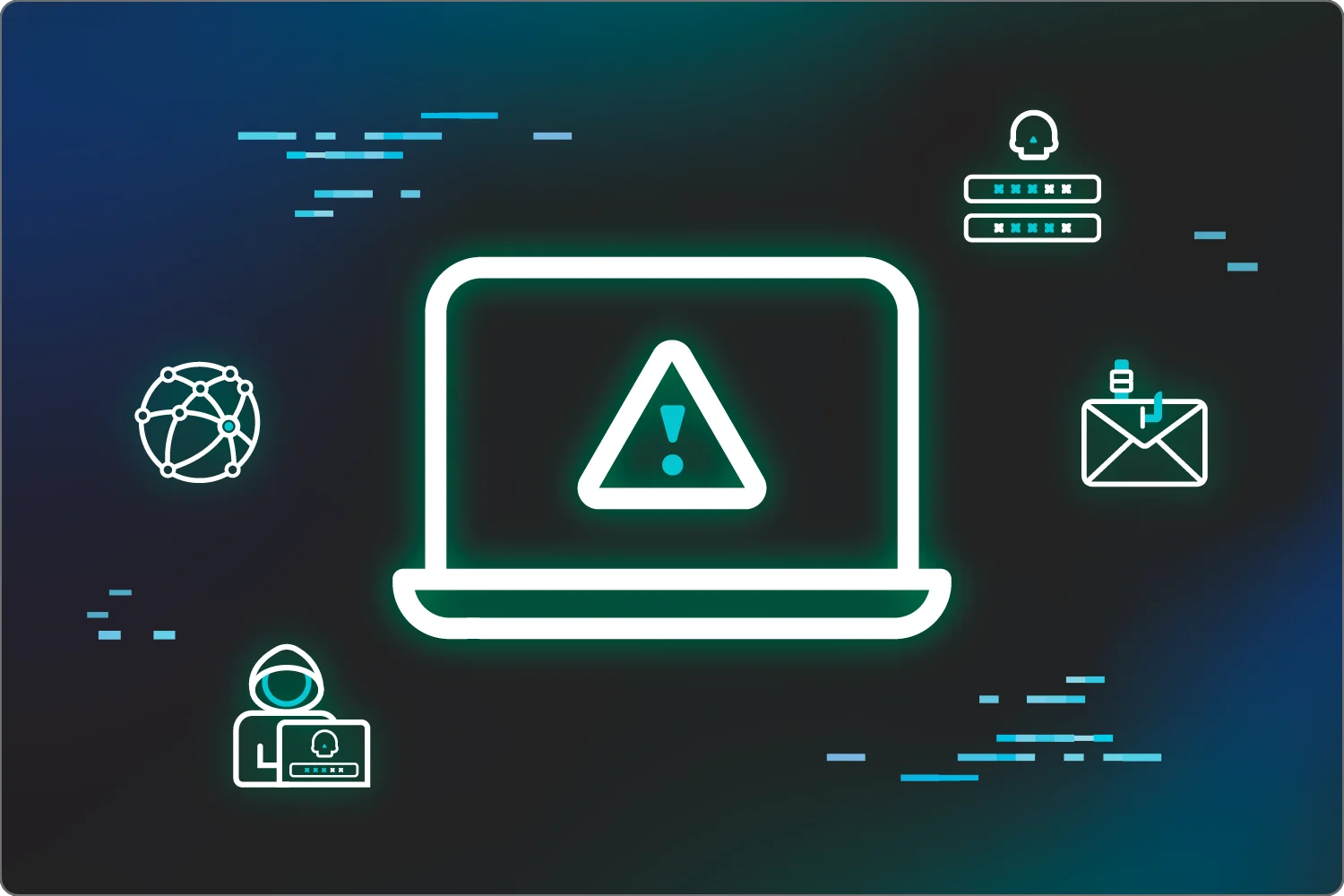
Learn about some of the most common cyberattacks, how threat actors access computers and networks, and how to lower future risks.
Imagine your laptop, smartphone, or even your smart fridge working behind your back, following commands from someone you've never met. It might sound like a sci-fi plot, but that's essentially what happens with a botnet.
Botnets aren't just a minor cybersecurity nuisance; they’re massive, shadowy networks responsible for some of the most damaging cyberattacks in history. If you're curious about what they are, how they work, and how to protect yourself, you’ve come to the right place. Let's break it down.
A botnet (short for "robot network") is a network of devices—think laptops, smartphones, and IoT gadgets like your connected thermostat or home cameras—that have been infected with malware. These infected devices, often called "bots" or "zombies," operate under the control of a cybercriminal known as a bot herder.
Here’s the scary part: the owners of these devices often have no idea their gadgets are compromised. Bot herders coordinate these devices to perform specific malicious tasks, ranging from spamming your inbox to carrying out massive cyberattacks.
Stealthy: Botnets use obfuscation techniques to remain undetected.
Scalable: They can include hundreds, thousands, or even millions of devices.
Dangerous: From crashing websites to stealing your bank login credentials, botnets wreak serious havoc.
Think of a botnet as an army, and the bot herder as its general. Here’s the play-by-play of how botnets operate:
A botnet begins with malware. Cybercriminals spread it via phishing emails, compromised websites, sketchy apps, or software vulnerabilities. Once installed, the malware quietly infects the device.
Once compromised, the device phones home to a central C2 server. This server acts as headquarters, issuing instructions to the botnet army.
The bot herder instructs their bots to carry out tasks such as flooding websites with traffic (distributed denial of service, or DDoS, attacks), stealing data, or sending spam emails.
Some botnets are designed to be self-propagating, meaning they automatically scan for and infect new devices, making the network grow like wildfire.
Botnets are cunning. They’ll encrypt their communication, obfuscate malicious activity, and even attempt to re-infect devices after removal.
Botnets are incredibly versatile, but here are the most common ways attackers use them:
Tens of thousands of bots flood a server with traffic, overwhelming it until it crashes. This can bring websites, online services, or entire networks to a screeching halt.
Botnets send billions (yes, billions) of spam emails daily, often containing phishing links, scam ads, or malware.
Bots can include spyware or keyloggers, stealing sensitive information like usernames, passwords, and even credit card numbers.
Botnets are often used to secretly mine cryptocurrencies, exploiting your device’s processing power without you knowing.
Cybercriminals inflate ad revenue by using bots to generate fake clicks on online ads.
Dark web marketplaces allow criminals to rent out botnets to others, so they can use them without needing to build their own botnet networks.
Cybercriminals use different architectures to control their bot armies:
All infected devices (bots) report to a single C2 server. This model is easy for attackers to manage but also vulnerable to takedown efforts that target the central server.
Devices communicate with each other, distributing both the commands and the workload peer-to-peer, without a central C2 server. This makes decentralized botnets harder to detect and dismantle.
Here, attackers get the best of both worlds, combining elements of centralized and decentralized architectures to achieve both efficiency and resilience.
Botnets might sound like something out of a tech thriller, but they’re a very real threat. Understanding how they work and how to protect your devices is key to staying one step ahead of cybercriminals.
A botnet is a network of infected devices controlled by hackers for malicious purposes.
Unfortunately, yes. Android devices are particularly vulnerable if you download apps from unverified sources.
Yes. While most victims are unknowingly involved, using or operating botnets is a criminal act in most parts of the world.
Unusual slowdowns, high data usage, frequent pop-ups, or security software that stops working are major red flags.
Absolutely. Smart home gadgets, like cameras or thermostats, are prime targets if they have weak security.



Botnets are one of the most significant threats in cybersecurity, combining stealth with devastating power. But like most cyber threats, botnets thrive on neglect and outdated practices. By following the steps we’ve outlined, you can protect your devices, your data, and your livelihood from becoming another zombie in a hacker’s malicious army.



Secure endpoints, email, and employees with the power of our 24/7 SOC. Try Huntress for free and deploy in minutes to start fighting threats.
